"Ave Maria"
Nombre total de pages vues
30/07/2019
29/07/2019
Science & Technology - Astronomy picture of the day : Lightning over the Volcano of Water
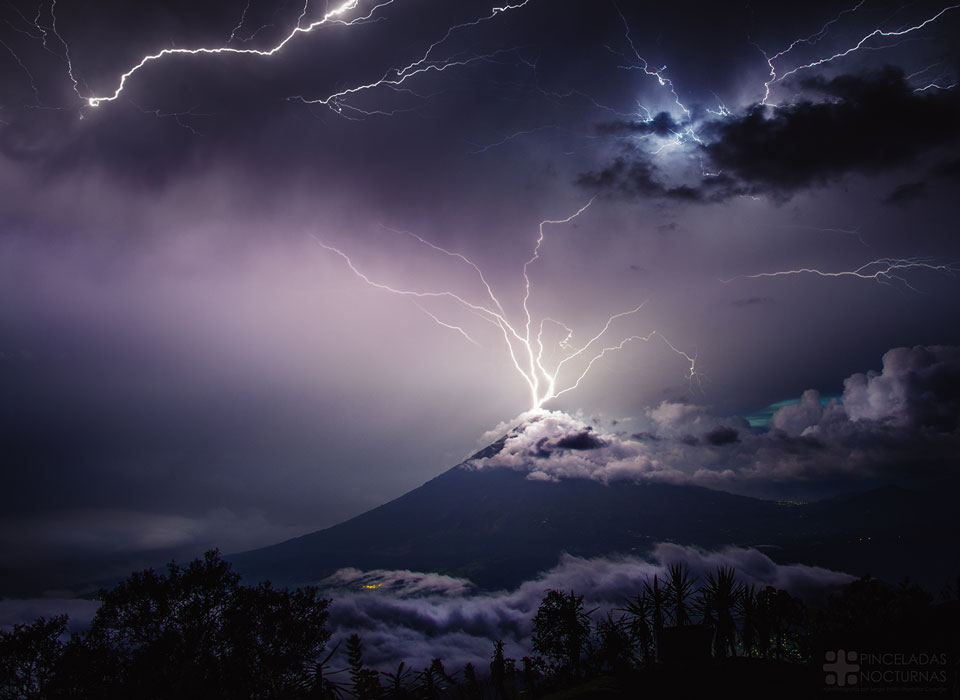
Image Credit & Copyright: Sergio Montúfar (Pinceladas Nocturnas)
Explanation: Have you ever watched a lightning storm in awe? Join the crowd. Details of what causes lightning are still being researched, but it is known that inside some clouds, internal updrafts cause collisions between ice and snowthat slowly separate charges between cloud tops and bottoms The rapid electrical discharges that are lightning soon result. Lightning usually takes a jagged course, rapidly heating a thin column of air to about three times the surface temperature of the Sun. The resulting shock wave starts supersonically and decays into the loud sound known as thunder. On average, around the world, about 6,000 lightning bolts occur between clouds and the Earth every minute.Pictured earlier this month in a two-image composite, lightning stems from communication antennas near the top of Volcán de Agua (Volcano of Water) in Guatemala.
28/07/2019
Science & Technology - Astronomy picture of the day : The North America Nebula in Infrared
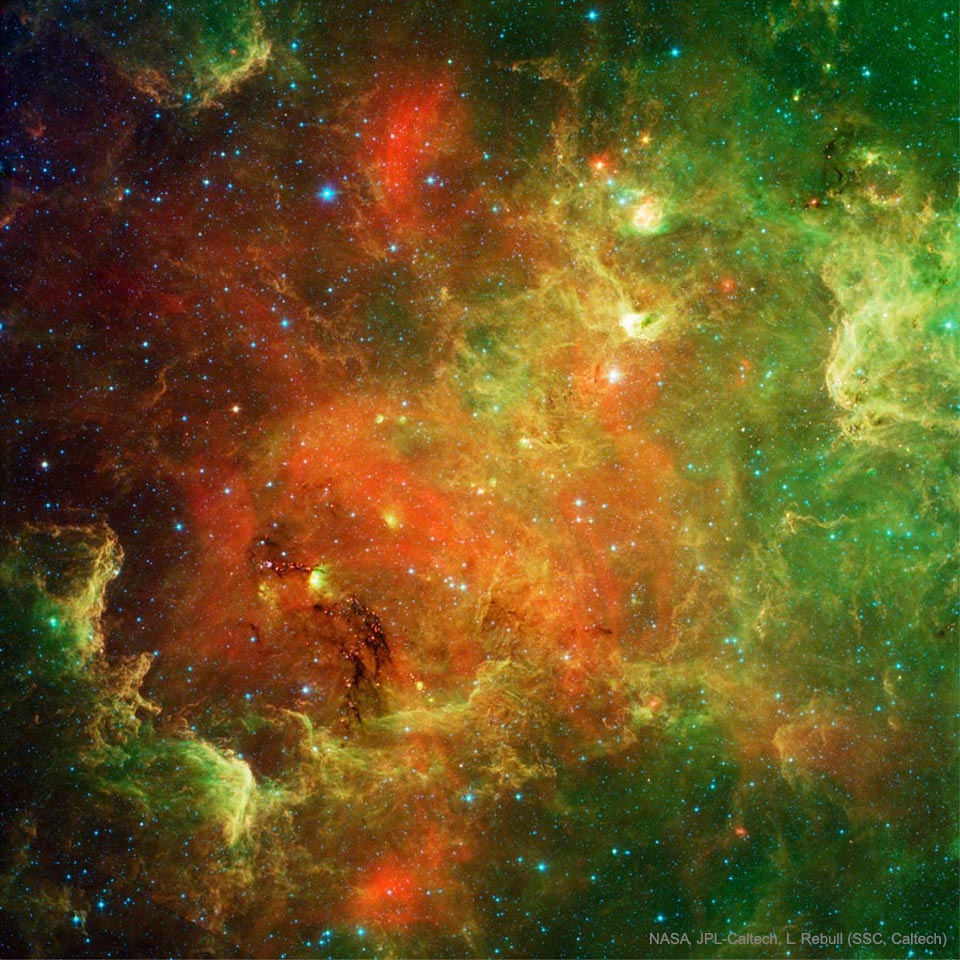
Image Credit & Copyright: NASA, JPL-Caltech, L. Rebull (SSC, Caltech); Optical Rollover: DSS, D. De Martin
Explanation: The North America Nebula can do what most North Americans cannot -- form stars. Precisely where in the nebula these stars are forming has been mostly obscured by some of the nebula's thick dust that is opaque to visible light. However, a view of the North America Nebula in infrared light by the orbiting Spitzer Space Telescope has peered through much of the dust and uncovered thousands of newly formed stars. Rolling your cursor over theabove scientifically-colored infrared image will bring up a corresponding optical image of the same region for comparison. The infrared image neatly captures young stars in many stages of formation, from being imbedded in dense knots of gas and dust, to being surrounded by disks and emitted jets, to being clear of their birth cocoons. The North America Nebula (NGC 7000) spans about 50 light years and lies about 1,500 light years away toward the constellation of the Swan (Cygnus). Still, of all the stars known in the North America Nebula, which massive stars emit the energetic light that gives the ionized red glow is still debated.
27/07/2019
Science & Technology - Astronomy picture of the day : Chandrayaan 2 Launch
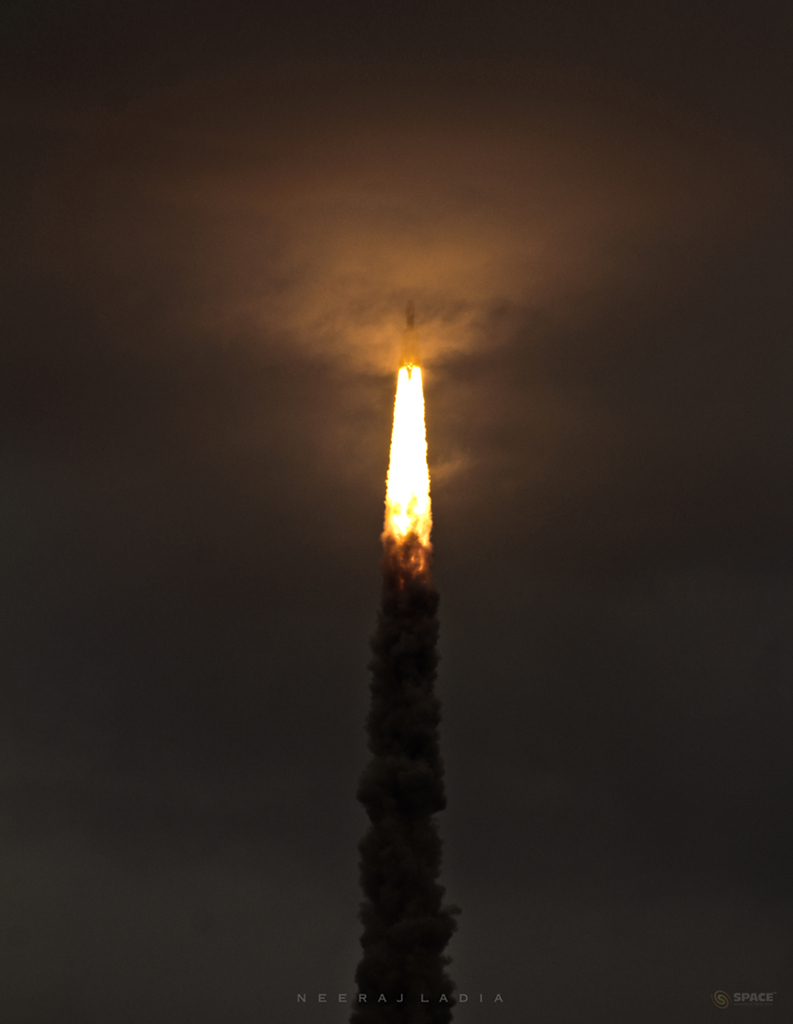
Image Credit & Copyright: Neeraj Ladia
Explanation: On July 22nd this GSLV (Geosynchronous Satellite Launch Vehicle) MkIII rocket vanished from sight into a cloud bank an instant after this dramatic snapshot was taken. Launched from India's Satish Dhawan Space Centre it carried the Chandrayaan 2 mission spacecraft into Earth orbit. The spacecraft's orbiter, lander, and rover are destined for the Moon, though. In the coming weeks it will perform a series of orbit raising maneuvers, eventually transferring to lunar orbit in early September. Carrying the solar-powered rover, the lander is scheduled to separate and attempt its autonomous soft landing at high latitudes near the lunar south pole. It should arrive on the lunar nearside near local sunrise and the start of a two Earth-week long lunar day on September 7.
26/07/2019
Science & Technology - Astronomy picture of the day : The Veins of Heaven
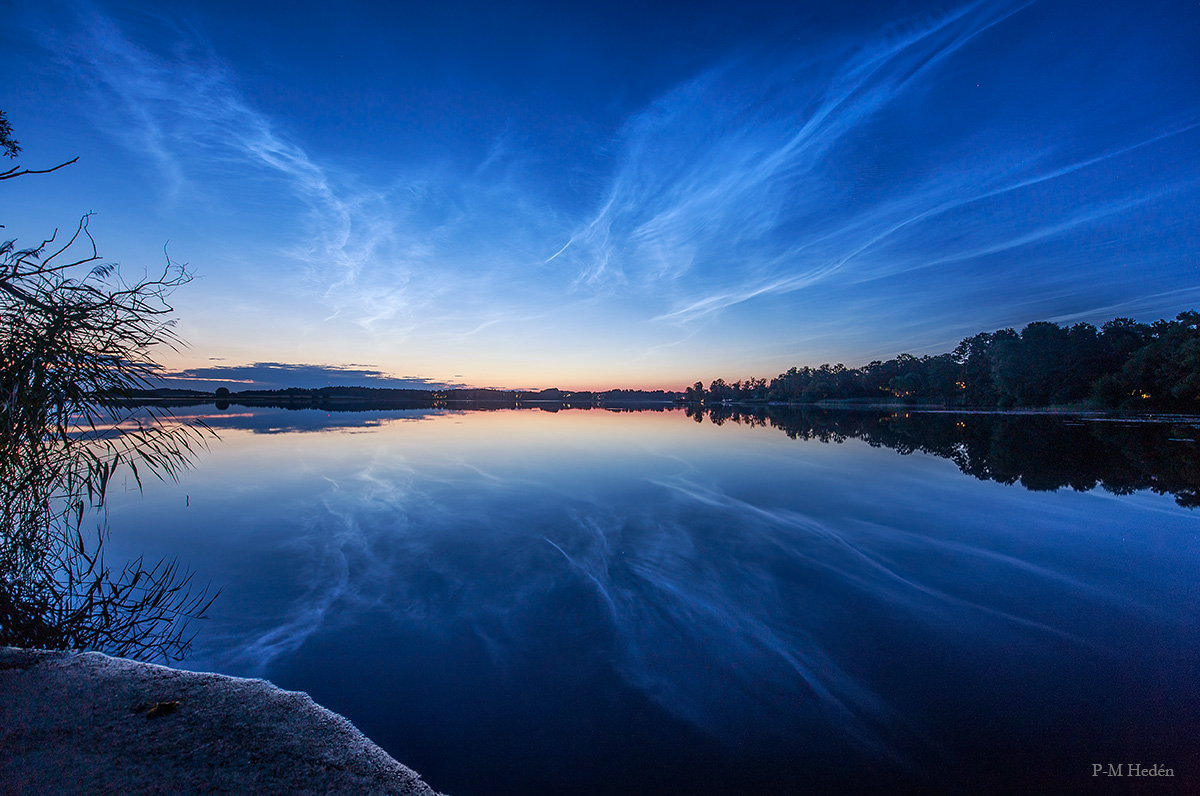
Image Credit & Copyright: P-M Hedén (Clear Skies, TWAN)
Explanation: Transfusing sunlight through a still dark sky, this exceptional display of noctilucent clouds was captured earlier this month, reflected in the calm waters of Vallentuna Lake near Stockholm, Sweden. From the edge of space, about 80 kilometers above Earth's surface, the icy clouds themselves still reflect sunlight even though the Sun is below the horizon as seen from the ground. Usually spotted at high latitudes in summer months the night shining clouds have made a strong showing so far during the short northern summer nights. Also known as polar mesopheric clouds they are understood to form as water vapor driven into the cold upper atmosphere condenses on the fine dust particles supplied by disintegrating meteors or volcanic ash. NASA's AIM mission provides daily projections of noctilucent clouds as seen from space.
25/07/2019
Science & Technology - Astronomy picture of the day : Cygnus Skyscape
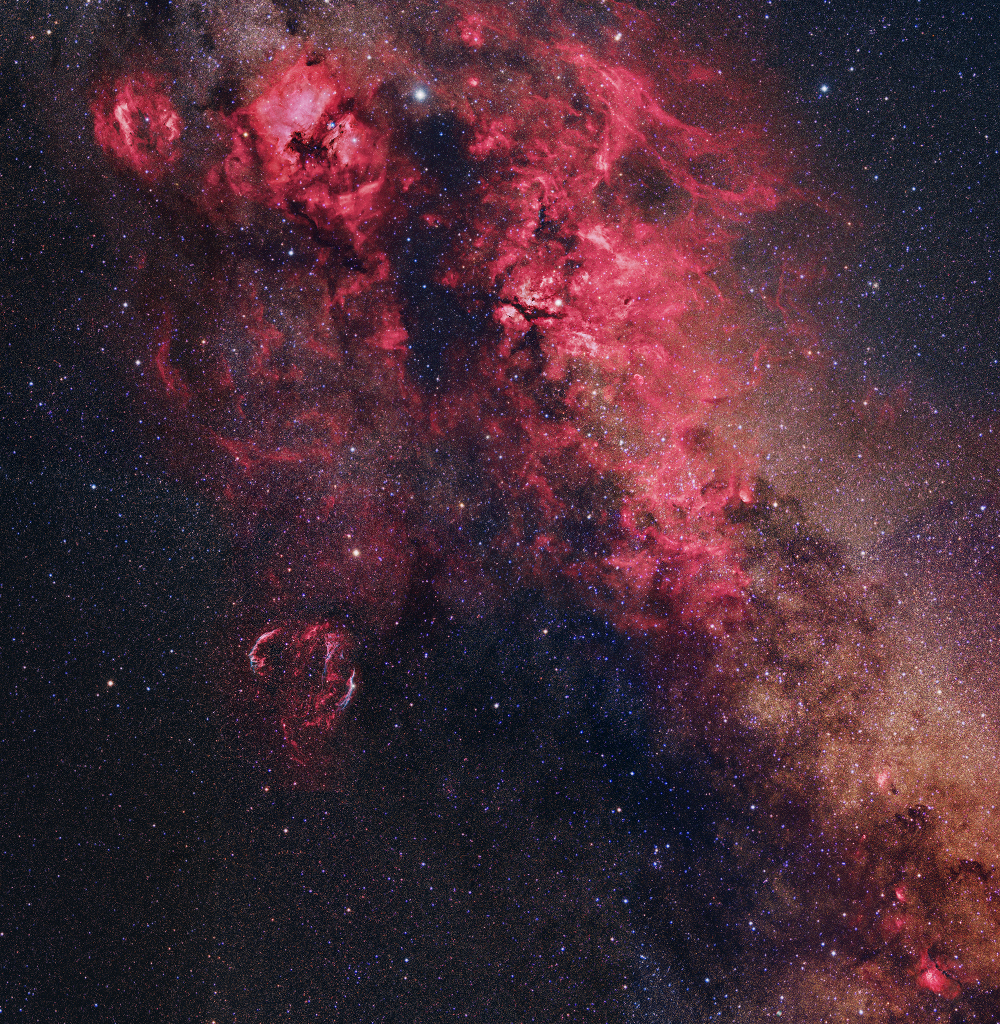
Image Credit & Copyright: Alistair Symon
Explanation: In brush strokes of interstellar dust and glowing hydrogen gas, this beautiful skyscape is painted across the plane of our Milky Way Galaxy near the northern end of the Great Rift and the constellation Cygnus the Swan. Composed with three different telescopes and about 90 hours of image data the widefield mosaic spans an impressive 24 degrees across the sky. Alpha star of Cygnus, bright, hot, supergiant Deneb lies near top center. Crowded with stars and luminous gas clouds Cygnus is also home to the dark, obscuring Northern Coal Sack Nebula, extending from Deneb toward the center of the view. The reddish glow of star forming regions NGC 7000, the North America Nebula and IC 5070, the Pelican Nebula, are just left of Deneb. The Veil Nebula is a standout below and left of center. A supernova remnant, the Veil is some 1,400 light years away, but many other nebulae and star clusters areidentifiable throughout the cosmic scene. Of course, Deneb itself is also known to northern hemisphere skygazers for its place in two asterisms -- marking the top of the Northern Cross and a vertex of the Summer Triangle.
23/07/2019
Science & Technology - Astronomy picture of the day : M82: Galaxy with a Supergalactic Wind
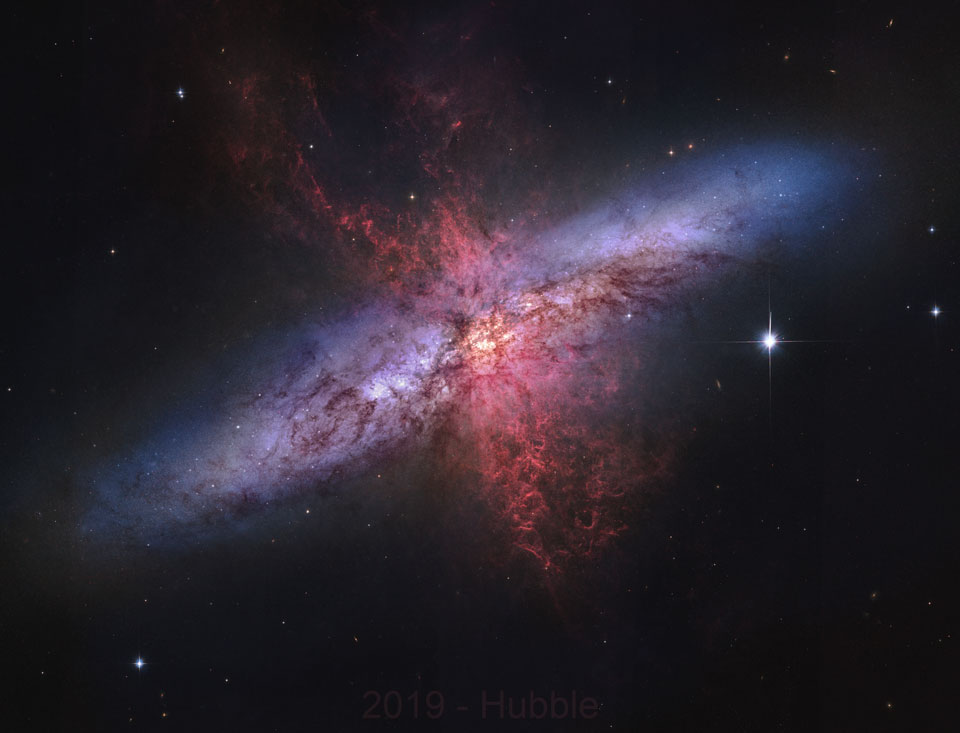
Image Credit: NASA, ESA, Hubble; Processing & Copyright: Daniel Nobre
Explanation: Why is the Cigar Galaxy billowing red smoke? M82, as this starburst galaxy is also known, was stirred up by a recent pass near large spiral galaxy M81. This doesn't fully explain the source of the red-glowing outwardlyexpanding gas and dust, however. Evidence indicates that this gas and dust is being driven out by the combined emerging particle winds of many stars, together creating a galactic superwind. The dust particles are thought to originate in M82's interstellar medium and are actually similar in size to particles in cigar smoke. The featured photographic mosaic highlights a specific color of red light strongly emitted by ionized hydrogen gas, showing detailed filaments of this gas and dust. The filaments extend for over 10,000 light years. The 12-million light-year distant Cigar Galaxy is the brightest galaxy in the sky in infrared light, and can be seen in visible light with a small telescope towards the constellation of the Great Bear (Ursa Major).
22/07/2019
Science & Technology - Astronomy picture of the day : HDR: Earth's Circular Shadow on the Moon
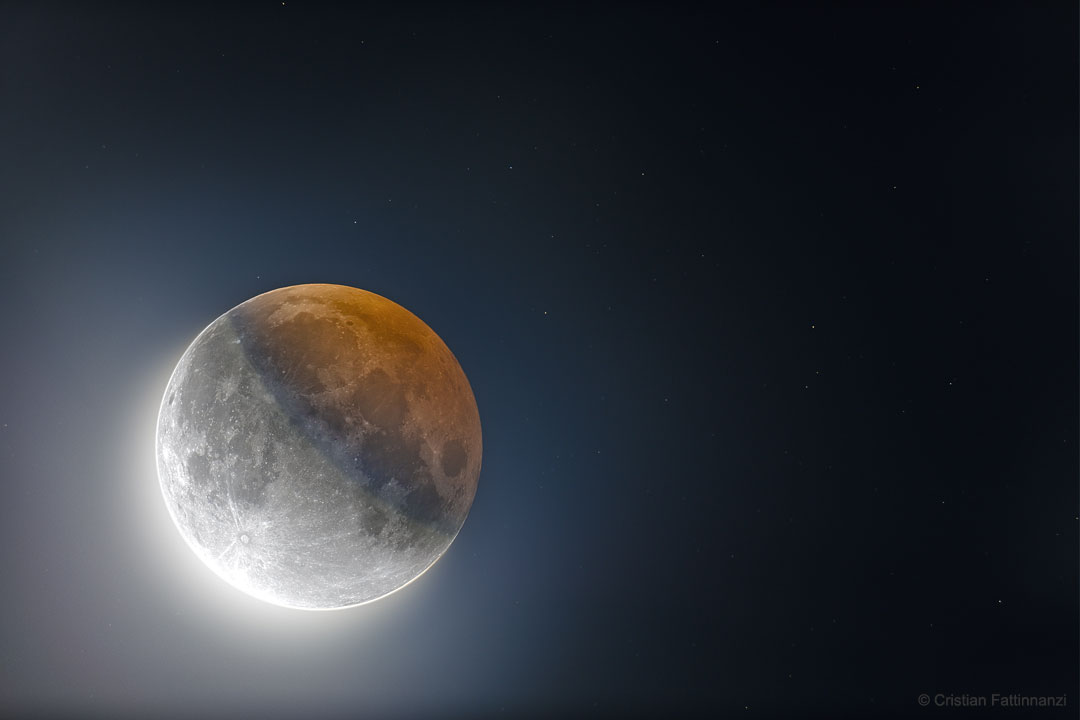
Image Credit & Copyright: Cristian Fattinnanzi
Explanation: What could create such a large circular shadow on the Moon? The Earth. Last week's full Moon -- the Buck Moon -- was so full that it fell almost exactly in a line with the Sun and the Earth. When that happens the Earth casts its shadow onto the Moon. The circularity of the Earth's shadow on the Moon was commented on by Aristotle and so has been noticed since at least the 4th century BC. What's new is humanity's ability to record this shadow with such high dynamic range (HDR). The featured HDR composite of last week's partial lunar eclipse combines 15 images and include an exposure as short as 1/400th of a second -- so as not to overexpose the brightest part -- and an exposure that lasted five seconds -- to bring up the dimmest part. This dimmest part -- inside Earth's umbra -- is not completely dark because some light is refracted through the Earth's atmosphere onto the Moon. A total lunar eclipsewill occur next in 2021 May.
21/07/2019
Science & Technology - Astronomy picture of the day : Moonquakes Surprisingly Common
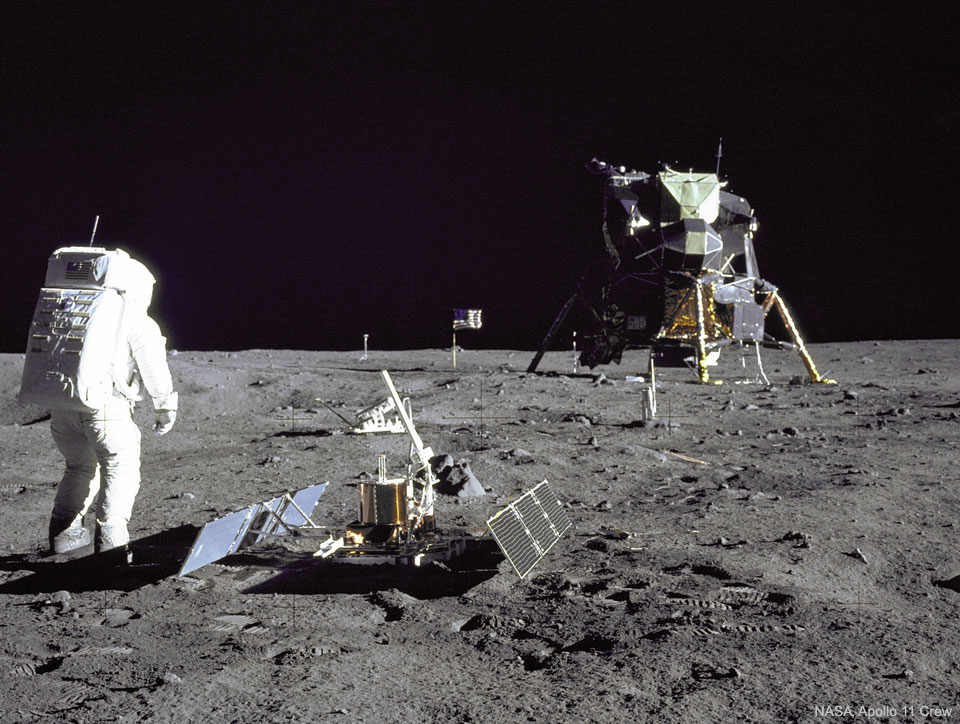
Image Credit: NASA, Apollo 11 Crew
Explanation: Why are there so many moonquakes? Analyses of seismometers left on the moon by the Apollo moon landings reveals a surprising number of moonquakes occurring within 100 kilometers of the surface. In fact, 62moonquakes were detected in data recorded between 1972 and 1977. Many of these moonquakes are not only strong enough to move furniture in a lunar apartment, but the stiff rock of the moon continues to vibrate for many minutes, significantly longer than the softer rock earthquakes on Earth. The cause of the moonquakes remains unknown, but a leading hypothesis is the collapse of underground faults. Regardless of the source, future moon dwellings need to be built to withstand the frequent shakings. Pictured here 50 years ago today, Apollo 11 astronaut Buzz Aldrin stands beside a recently deployed lunar seismometer, looking back toward the lunar landing module.
19/07/2019
Science & Technology - Astronomy picture of the day : Tranquility Base Panorama

Image Credit: Neil Armstrong, Apollo 11, NASA
Explanation: On July 20, 1969 the Apollo 11 lunar module Eagle safely touched down on the Moon. It landed near the southwestern corner of the Moon's Mare Tranquillitatis at a landing site dubbed Tranquility Base. This panoramic view of Tranquility Base was constructed from the historic photos taken from the lunar surface. On the far left astronaut Neil Armstrong casts a long shadow with Sun is at his back and the Eagle resting about 60 meters away ( AS11-40-5961). He stands near the rim of 30 meter-diameter Little West crater seen here to the right ( AS11-40-5954). Also visible in the foreground is the top of the camera intended for taking stereo close-ups of the lunar surface.
Inscription à :
Commentaires (Atom)
SANTé/MEDECINE - CANCER - 12 AVANCEES REVOLUTIONNAIRES - 7. Des biopsies liquides et synthétiques moins invasives et plus rapides
Les biopsies classiques nécessitent le prélèvement de tissu, souvent par chirurgie. Aujourd’hui, la biopsie liquide offre une alternative pl...

-
2022 September 26 All the Water on Planet Earth Illustration Credit: Jack Cook, Adam Nieman, Woods Hole Oceanographic Institution ; Data ...
-
2025 May 11 The Surface of Venus from Venera 14 Image Credit: Soviet Planetary Exploration Program , Venera 14 ; Processing & Copyri...